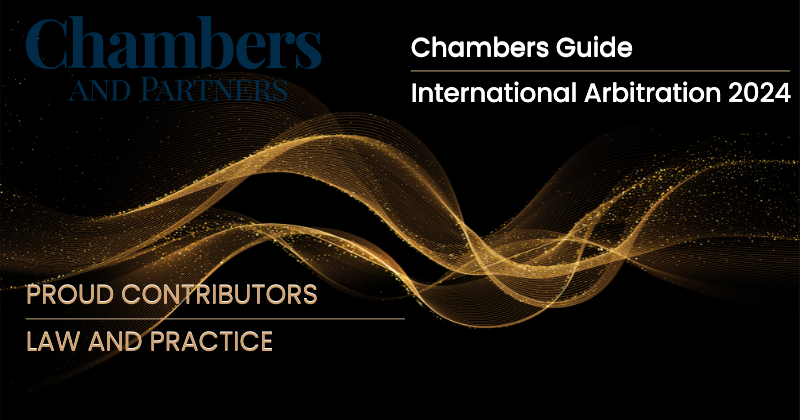Arbitration as a preferred method of dispute resolution has gained popularity in the recent past because it is considered to be flexible, allows for party autonomy and confidentiality, and more importantly, saves time and money in comparison to litigation. There is however, increased concern and discussion around the costs of international commercial arbitrations and the length of time within which disputes are resolved.
It has been particularly noted that arbitral proceedings are increasingly exhibiting the negative aspects associated with litigation such as high costs, delay and inefficiency. The question of cost effectiveness and efficiency in international commercial arbitration is one that cannot be over emphasised.
Parkinson’s law states that work expands to fill the time available for its completion. This adage is especially true where the person executing the task is remunerated on an hourly basis as is customary in most if not all international arbitrations. In the context of an international arbitration, this means that the lengthier the proceedings, the higher the costs.
Fortunately, arbitration as a dispute resolution mechanism is designed to allow parties to control the costs and the procedure or process within which this can be done. Party autonomy in arbitration means that parties are the masters of the arbitration process and they can determine and agree on virtually all the steps taken from the commencement to the conclusion of the arbitral proceedings. If utilised effectively, party autonomy can be a powerful tool for controlling the costs and avoiding delays in arbitral proceedings.
In this article, we discuss various factors that parties to arbitral proceedings must consider if they wish to have the dispute resolved in a cost effective, expeditious and efficient way.
The general costs associated with international arbitration mainly include the arbitrators’ fees and expenses, legal or other costs of the parties such as witness expenses, investigation fees, expert witnesses and the fees and expenses of the arbitral institution concerned. Interestingly an analysis of the breakdown of general arbitration costs done by Louis Flannery of Stephenson Harwood reveals that administrative costs (fees of the administering institution) amount to two percent (2%) of the total cost, the arbitrator’s fees and expenses amount to sixteen percent (16%) of the total cost, while legal counsels’ costs for legal representation amount to eighty-two percent (82%) of the total cost.
What this data shows is that greater focus should be on bringing down the costs for legal representation. In this article, we identify various stages of an arbitration at which costs may be controlled.
a) Administering Bodies and Institutional Rules
From the outset, the parties should decide between an institutional (or administered) arbitration versus an ad hoc (non-administered) arbitration. There are numerous institutions that provide assistance in running the arbitration in exchange for a fee. These institutions assist in the administrative aspects of the arbitration such as organising hearings, handling communication between the parties and the arbitrators, and handling payments. However, they do not decide on the merits of the dispute – this is left entirely to the arbitral tribunal. An ad hoc arbitration on the other hand, places the burden of running the proceedings on the parties and the arbitrators. However, parties may choose a set of arbitration rules designed to aid in ad hoc arbitrations such as those developed by the United Nations Commission on International Trade Law (UNCITRAL).
An institutional arbitration may particularly be beneficial to parties without arbitration experience as it will provide guidance and avoid time consuming discussions between the parties on preliminary issues that are incidental to the main dispute.
Examples of leading international arbitration institutions include; the International Chamber of Commerce (ICC), London Court of International Arbitration (LCIA), the American Arbitration Association (AAA), the International Centre for Settlement of Investment Disputes (ICSID), China International Economic and Trade Arbitration Commission (CIETAC), and the World Intellectual Property Organisation (WIPO). However, some of these institutions are specific to certain types of disputes, for example, ICSID only caters to legal disputes arising out of an investment between a state party to the ICSID convention and a national of another state party to the ICSID convention.
It should be noted however, that fee structures differ depending on the institution, with some institutions charging on the basis of the amount in dispute and others charging on a flat hourly rate basis. The decision to use or not to use an administering body and institutional rules or institutional rules will have an impact on the costs of the arbitrations and parties are encouraged to compare costs of the various institutions beforehand.
b) Drafting the Arbitration Agreement
A well drafted arbitration agreement or clause will avoid preliminary arguments such as whether the dispute is subject to arbitration. Disputes as to the meaning or scope of the arbitration agreement clause are ordinarily determined first and tend to substantially add to the length and cost of the arbitration. Parties should as far as possible, avoid attempting to limit the scope of disputes that are subject to the arbitration unless special circumstances require it. This is because, even when drafted carefully, exclusions may provide an opportunity for preliminary arguments to be raised regarding the jurisdiction of the arbitral tribunal to hear and determine the dispute.
A good arbitration agreement or clause should be clear and should specify the number of arbitrators, the arbitration institution and rules if any, the seat of the arbitration, having regard to practical considerations such as neutrality, availability of hearing facilities, proximity to witnesses and evidence. While the seat of the arbitration does not determine the governing law of the contract and the merits, it determines the law that governs certain procedural aspects of the arbitration. Where parties choose institutional arbitration, ideally, the rules adopted should coincide with the institutional rules. It is also advisable that the parties use the model clause recommended by the institution as a starting point for drafting the arbitration agreement as this would have been tried and tested.
c) Choice of Counsel
Given the significant costs and expenses of international arbitrations, it would be foolhardy for a party to declare a dispute and initiate arbitration proceedings without first carrying out a cost benefit analysis. A lawyer with experience in international arbitration and is familiar with the fee structure and workings of the various administering bodies would be in a position to provide a legal opinion on the merits of the dispute which can then assist a party to take a commercial view on the matter.
Ultimately, the parties should set a realistic budget for the arbitration at the initiation of the arbitration and cross-check with their legal counsel on whether the funds set aside will suffice. Parties may also require that their counsel seek their approval before exceeding a set limit.
The choice of legal counsel is therefore vital if a party is to keep the costs and length of the arbitration down. Parties are encouraged to select lawyers with a reputation for efficiency and availability. Selected lawyers should also have specific arbitration expertise as opposed to litigation. In fact, there is nothing to prevent a party from interviewing or pre-screening potential legal counsels and requiring that they confirm their “availability for an efficient and reasonably expeditious schedule.”
d) Terms of Reference and Case Conferences
The terms of reference and case management conferences have been hailed as the kernel of cost effectiveness in international arbitration. Both are very useful tools for managing arbitrations in order to ensure the fast and efficient progress of arbitral proceedings as they set out framework of the arbitration from the beginning to the end.
The terms of reference are drawn and signed by mutual consent of the parties and include information relating to the parties and arbitrators, a summary of the pleas and defences of the parties, the claims, the dispute in question, and the procedural provisions which shall be applied. More importantly it may be used to compel the parties to provide case summaries in order to narrow down the issues and empowers the arbitral tribunal to decide procedural issues while dispensing with physical meetings as much as possible and using conference calls.
At this stage, parties may also consider whether it is necessary to join other parties or consolidate disputes with a view to avoiding a multiplicity of suits thereby cutting down costs and enhancing efficiency.
e) Evidence Production, the Hearing and the Award
The production of numerous unnecessary documents that are not material to the matters in dispute can spike the costs of arbitration and cause significant delays in the expeditious resolution of the dispute. It is therefore imperative that parties produce only those documents that are material to the dispute rather than all documents that are relevant to the dispute. For example, there is no need to produce documents in respect of non-controversial facts. Parties should also agree on an organised system of producing and identifying the documents and as far as possible avoid duplication and adopt a coherent system of numbering. As a general rule all documents should be submitted in electronic form and should be considered authentic unless their authenticity is challenged. As a preliminary matter, parties should consider whether it is entirely necessary to have an oral hearing, and whether the dispute can be determined on the basis of the documents produced by the parties. This can significantly cut down the on the costs of witnesses, accommodation, travel expenses, hiring a venue among others. It also greatly reduces the length of the arbitration.
The existence of a hearing agenda, a fixed timetable and time keeper as well as regular “housekeeping” sessions throughout the hearing aid in saving time. Other considerations include, whether the location of the hearing is convenient for all parties, whether the number of witnesses may be limited, whether consecutive hearing dates can be scheduled to avoid back and forth travel and minimise travel costs and conducting a pre-hearing conference in order to discuss logistics of the hearing; At the end of the hearing, parties should seriously consider whether closing submissions are necessary, and if they are, they should elect to have either oral or written submissions but not both. It will also save time and costs for the arbitral tribunal to specify the questions that they wish to be addressed in the closing submissions.
The arbitral tribunal must use its best efforts to submit the draft award to the administering institution as quickly as possible and within the timeline set by the administering institution if any and must ensure that time has been reserved in their diaries after the hearing for deliberation on the dispute. It may be prudent to select an administering institution that scrutinizes and reviews the award before it is issued as it avoids further litigation that may be initiated in local courts as grounds for setting aside the award.
Conclusion
Whereas there are a wide range of tools and devices that are available in arbitrations to ensure that the arbitration is conducted in a cost effective and efficient manner, the ultimate decision depends on the various stakeholders involved in international arbitration that are key in monitoring and determining the ultimate cost and length of the arbitration. These are, the parties to the arbitration (or in-house counsel), external counsel, the administering institution and the arbitral tribunal, all of whom have a role to play in assessing the objectives and merits of the arbitration, drafting the arbitration agreement, engaging in pre-arbitration negotiations, setting a budget for the arbitration, selecting the arbitral tribunal, determining the procedure and procedural rules applicable to the arbitration among other matters. Arbitration may indeed be cheaper than litigation. However, in the realm of international institutional arbitration, the cost effectiveness of the arbitral process requires conscious effort from the various stakeholders.





